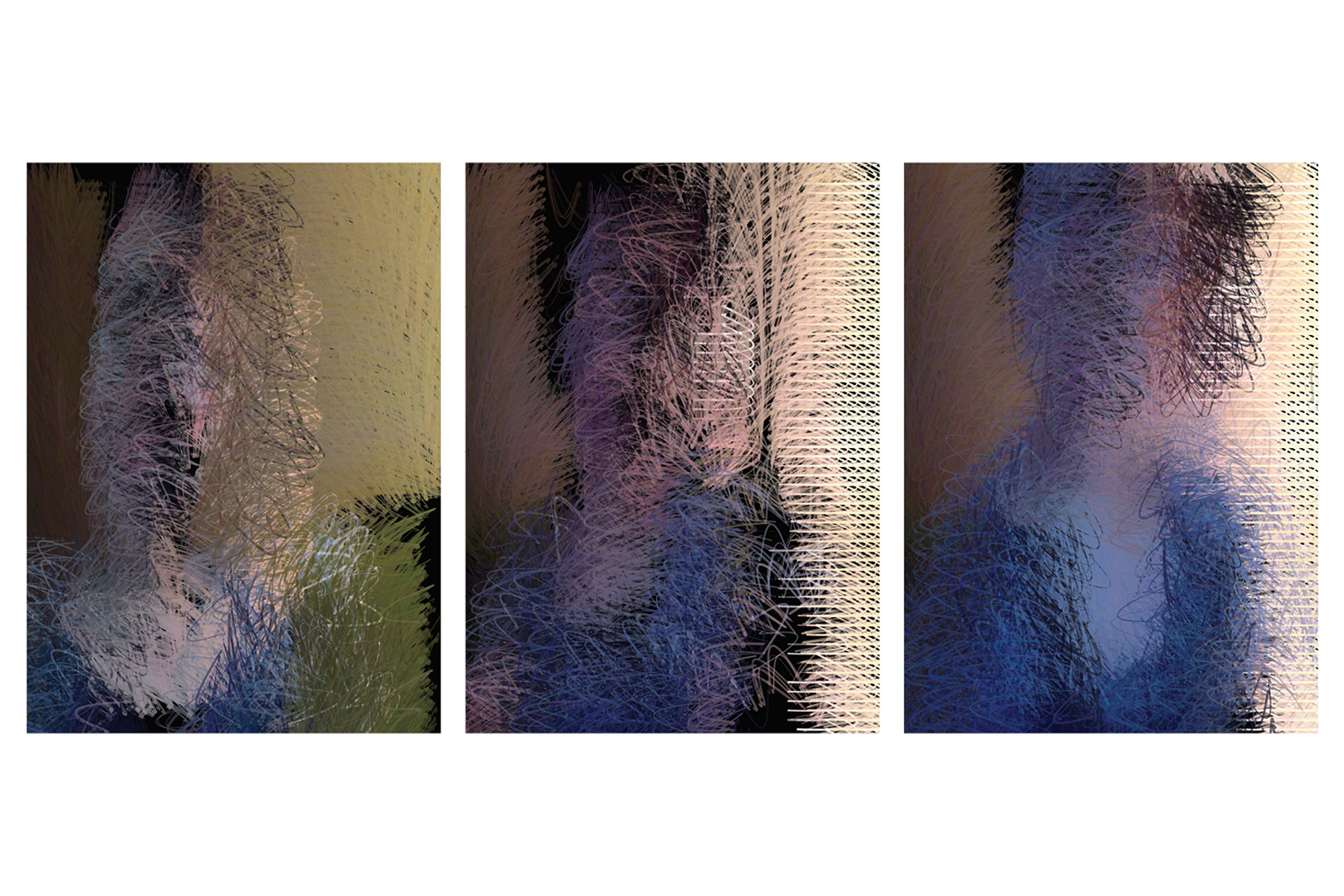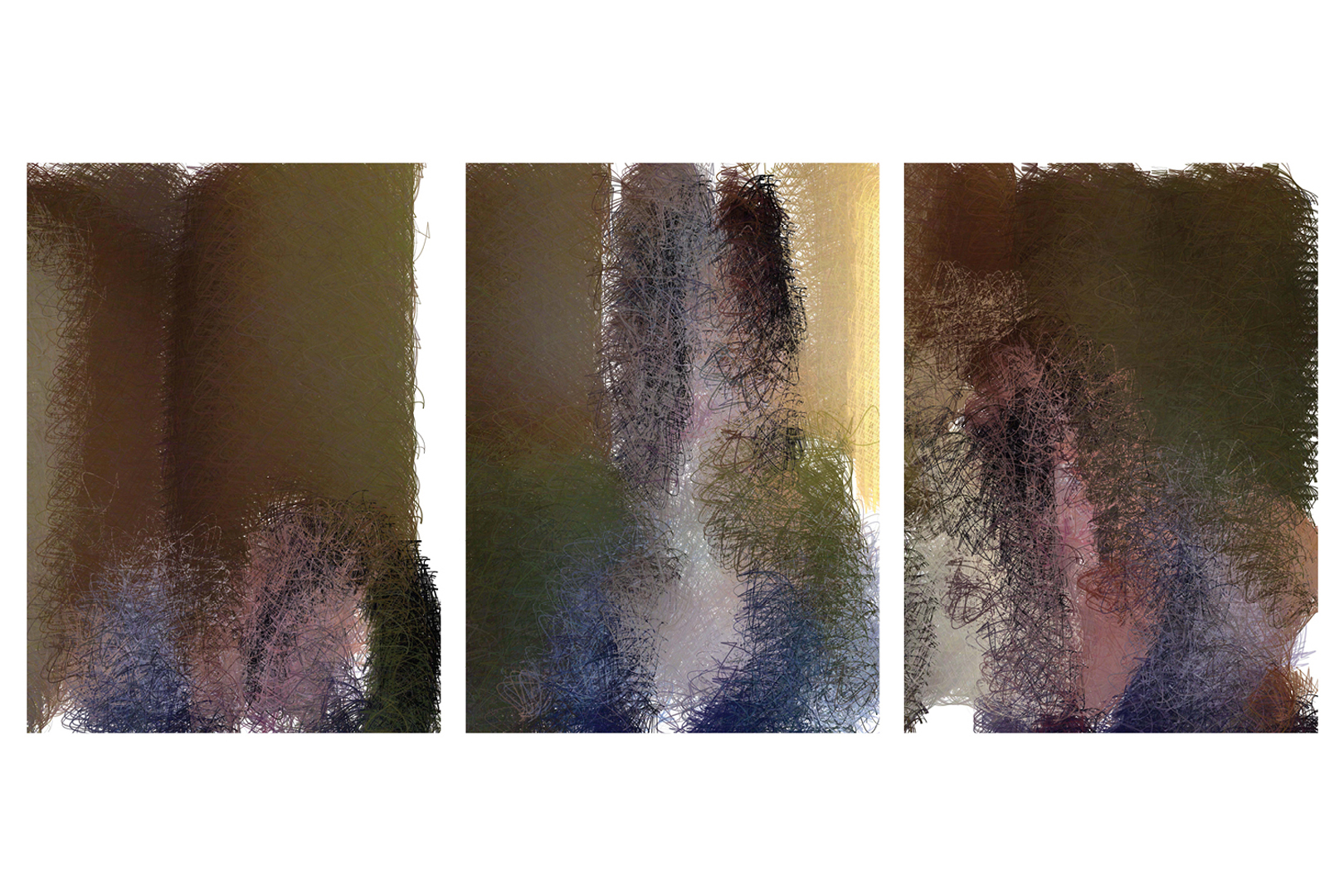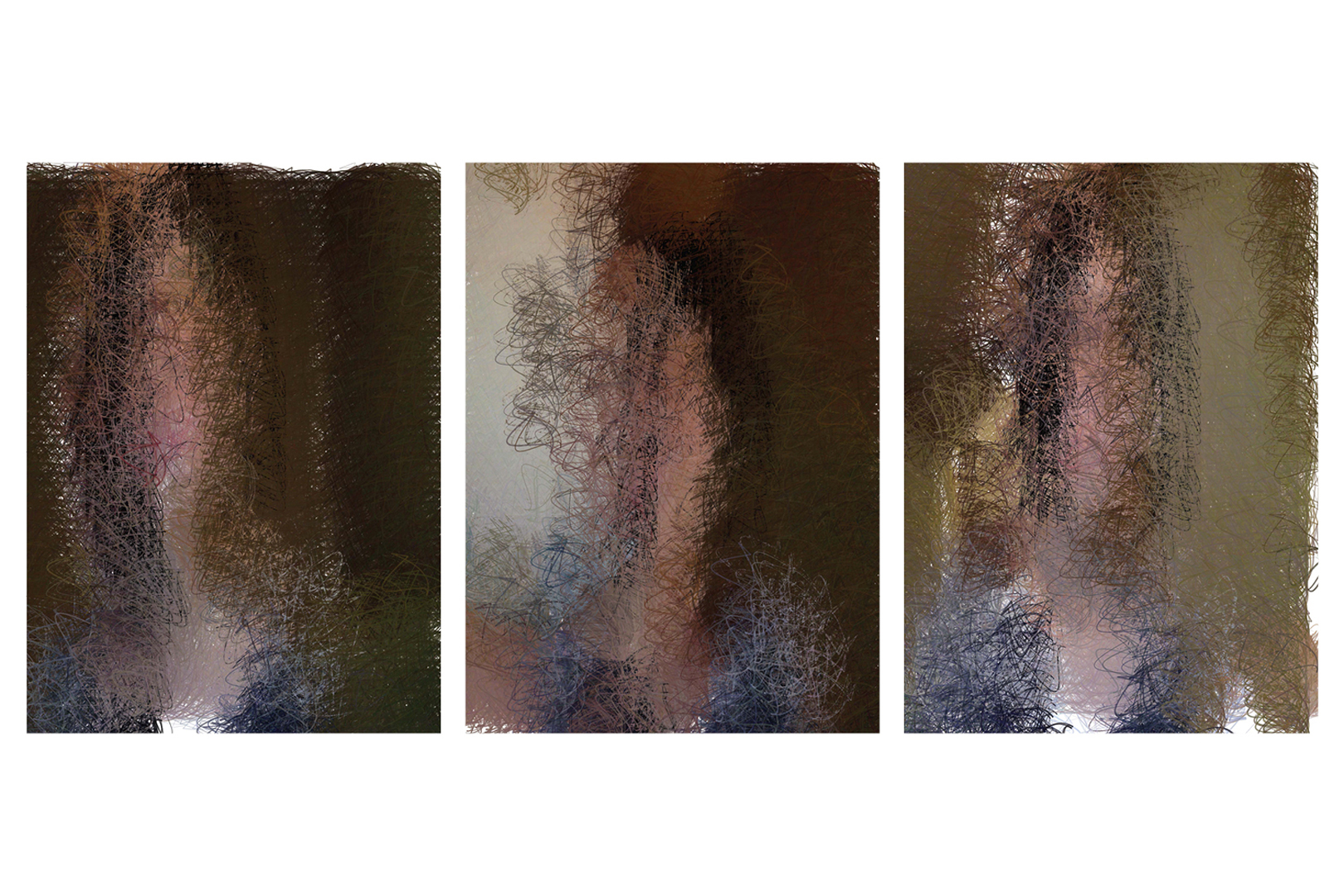Yeohyun Ahn: Selfie + CODE III: Melancholy
Artist(s):
Title:
- Selfie + CODE III: Melancholy
Exhibition:
Category:
Artist Statement:
Summary
It is a collection of generative selfie series by using computer algorithms to bring awareness of Asian female faculty on US campuses being isolated, and marginal in a predominantly white institution of America.
Abstract
A selfie is a form of art. Over 1 million selfies are now taken every day. Selfies are not always as spontaneous as they seem. They can be a communication tool like any other that can be manipulated for purposes. Selfie + CODE III is a collection of generative selfie series by using computer algorithms. The algorithmic processes expend the concepts of traditional self-portraits to generative and expressive selfies delivering thought or feeling. The artist started taking her generative selfies in 2015 to raise awareness of Asian female faculty being isolated and marginal in a predominantly white institution (http://www.socialhomelessness.com). Her generative selfies have captured psychological moments to express those individual identities are devalued and deconstructed by a homogeneous institution in the United States. It has been shared by social media. The virtual supporting system at Facebook, “Like”, by her diverse mentors and friends, helped her to persist and survive in a regionally isolated and exclusive community. Eventually, It has brought her psychological reconciliation and healing to succeed in dealing with difficulties.
Technical Information:
Asian female faculty on US campuses may experience the highest levels of isolation, and marginalization on US campuses, compared with other minority faculty groups. Challenging areas are isolation, high attraction, student evaluations, peer perception, more service responsibilities, etc. The series of the generative selfie were taken in the author’s office space in a white institution to represent a space for Asian female faculty on US campuses. The office light was intentionally controlled to be darker to express an isolated and marginalized space. An internal web camera captured the artist’s self-portrait photograph by using computation. It eliminated the facial expression to express being treated as less valued, unremarkable, and not worthy of attention. It was taken by different angles and levels of the light repeatedly and sequentially. It referenced Mirror library, developed by Daniel Shiffman, in Processing. It transforms each pixel from a real-time video source to each rectangle on the levels of brightness by using an internal web camera. Each shape is transformed into bezier curves to draw the moments being brushed off and added several variables, functions, and color palettes to express the visual theme.
Process Information:
The visual style was inspired by Impressionism, which is a 19th-century art movement that captures a moment, and Expressionism expressing inner troubles, and feelings of anxiety rather than technical skills, or beauty, a traditional goal of art. The computational processes expand the concepts of traditional self-portraits to generative selfies conveying specific thoughts or feelings. I used Processing and Mirror library, developed by Daniel Shiffman. It transformed each pixel from a real-time video source to each rectangle on the levels of brightness by using an internal web camera. Each shape was transformed into each line to draw the moments being brushed off. Several variables, functions, and color palettes are added to express the visual theme, being ignored and isolated. The series of the selfie was taken in my office space to represent a space for Asian female faculty on US campuses. The process was similar to professional photography taking in a Photo studio. It was taken by different angles an
It started with my personal story that I was not confident how it would be unfolded as my art and design research project which has a very unconventional theme, Asian Female Faculty, and use a non-traditional medium, selfies. Also, it includes a site-specific installation, Guerrilla Projection, a social group, Asian Female Scholars, cofounded by me, and a mobile application, #socialhomeless. It is a multidisciplinary art and design research and practices to suggest an alternative way of art and design practices crossing boundaries among computation, graphic art, journalism, public exposure, and participation. I hope that it would be inspirational for future multidisciplinary art and design projects at SIGGRAPH Asia’s Art Gallery.
Other Information:
Inspiration Behind the Project
It is visual documentation with my generative selfies to portrait Asian female faculty being isolated and marginal in a predominately white and regionally exclusive community of the United States. Currently, I am an Assistant Professor of Graphic Design at the University of Wisconsin Madison. I am originally from South Korea. I was educated relatively in a diverse community, Baltimore, MD, of the United States, and I was relocated to the Midwest in 2008 due to my husband’s job relocation. I started teaching as an adjunct faculty at the School of Art Institute of Chicago, a prestigious world-class art school, and Chicago State University, which is a historically black university, once I was hired as a tenure track professor at a predominately white and private institution in Northwest Indiana. I started being aware of Asian female faculty being perceived as uncomplaining perseverance and submissiveness to authority. My classroom was occasionally a minefield of student resistance and negative attitudes. In 2016, I started taking my generative selfies at the institution. It has been shared by social media. The virtual supporting system at Facebook, “Like”, by my diverse mentors and friends, helped me to persist and survive in a regionally exclusive community. Eventually, It has brought my psychological reconciliation and healing to succeed in dealing with difficulties.







